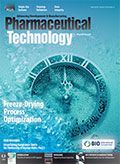Harmonization of Batch Records
Monetary benefits will outweigh the hassle of batch record harmonization, says Siegfried Schmitt, principal consultant at PAREXEL.
Q: Our company recently acquired several new production sites in Europe, Asia, and the Americas. As part of the integration process, we decided to harmonize our batch records. We appreciate that local regulations and differences regarding the type of production equipment we use may require some local adaptations and deviations from a standard template; however, we are faced with stiff opposition from many sites to change their batch record design. Can you advise on how best to convince everyone of the benefits of a harmonized template?
A: The integration you describe will without doubt require many changes to the documentation, and therefore, it is a sensible decision to think about harmonizing documents, such as batch records. You are correct that there will be differences in the equipment and the processes, even for the same product by the same synthetic method, but in different facilities. But, this in itself is not an impediment to creating a universal batch record template.
It is important to consider why batch record templates differ so widely. First, the workforce will be used to different styles of documentation. How much or how little detail do they require to perform a task? It is not unusual to find a 10-page document used for a process in one location to extend to 50 pages for the exact same process elsewhere.
Next, let us look at the style of the contents: Is it all text? Is there use of pictures or graphics? Is it all in a logical sequence? Is it in one language or in multiple languages? Does it require each page to be signed by five persons for each batch record, or is there just one signature page? All these styles exist, and they all are developed for specific reasons. It is thus important to understand these reasons in order to design a universally accepted template.
Having the opportunity to completely redesign the batch record template provides a unique chance to build in as many safeguards from a data integrity perspective as possible. This includes removing any ambiguity regarding what must be recorded, by who, when, and how. For example, the instruction ‘add 100 liters 10% NaOH over 1 hour should have fields for entering the actual values that should look like this:

This technique makes it clear to the operators what fields to complete and how to enter the values correctly. The use of symbols and colors is encouraged (e.g., to highlight critical steps, warn of potentially dangerous substances, etc.).
This is also a superb opportunity to eliminate the ‘numeritis disease’ (i.e., the unnecessary and time-wasting use of highly complex numbering systems). Step 001 in the batch record should be followed by step 002, then step 003, etc. There is no need at all for having something like step 1.2.5.2.8a.
Depending on the level of automation in the plants, you may be able to move from paper batch records to electronic batch records. The latter will provide a higher degree of data integrity as much fewer manual entries of data will be required. Thus, the standardization of the batch record can indirectly also drive standardization of the computerized systems in your plants.
Now let us look at some indisputable benefits of having a standard batch record template rather than a free-for-all:
- Reviewing batch records for continued compliance with the regulations is facilitated across sites, countries, and continents.
- Extracting information for or verifying concurrence with the submitted dossiers (e.g., for new drug applications, marketing authorization applications, variations, post-approval changes, etc.) is straightforward and simplified.
- Batch record review by the qualified person (as regulated in the European Union) or the quality unit (e.g., for the purpose of batch release or audits) is streamlined.
- Extracting information from the batch records for preparing annual product reviews (or product quality reviews), or for the purpose of benchmarking is effectively repeatable and possible.
Every day a product can be released to the market earlier because of any of the above benefits can result in monetary benefits. And who is to dispute that advantage in your company?
In summary, if the regulatory compliance benefits of a standardized batch record template aren’t compelling enough, monetary benefits gained by earlier release of drug product will no doubt make it a straightforward decision.
Article Details
Pharmaceutical Technology
Vol. 42, No. 5
May 2018
Pages: 66
Citation
When referring to this article, please cite it as S. Schmitt, "Harmonization of Batch Records" Pharmaceutical Technology 42 (5) 2018.

Pharmaceutical Tariffs Are Imminent: How Industry is Bracing for Impact
April 16th 2025On April 14, 2025, the Trump Administration launched a national security-driven investigation into pharmaceuticals, a move that will likely result in tariffs being placed on pharmaceutical drugs, ingredients, and other components that are imported from outside of the United States.